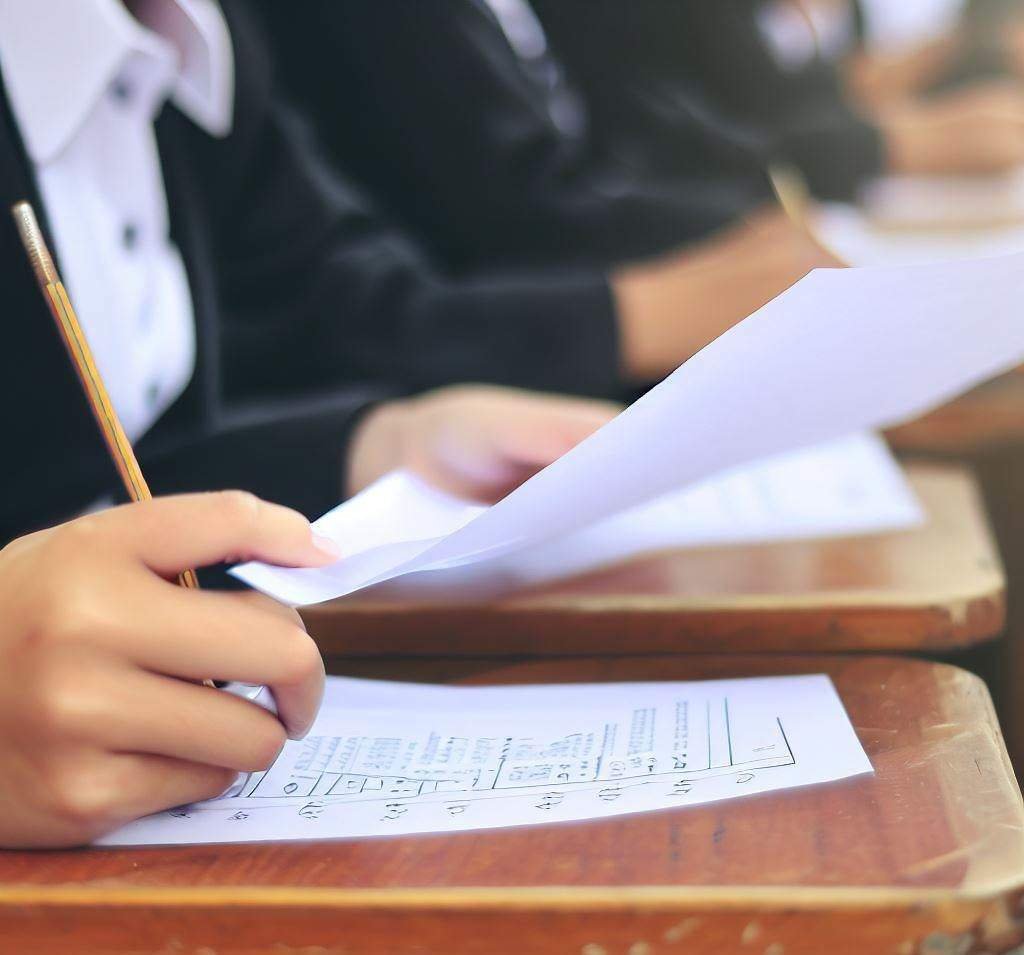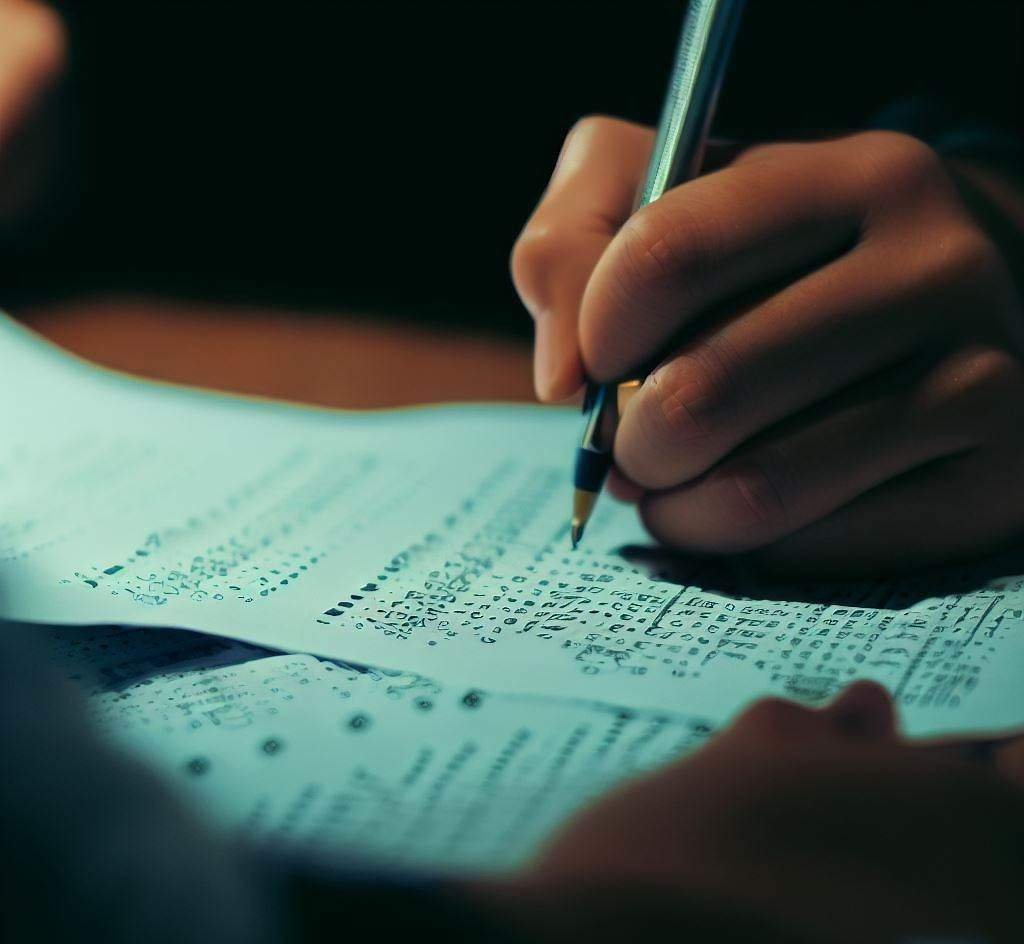Are you getting ready to sit for the MDCAT examinations in Pakistan? We understand that preparing for such an important exam will require a reliable and comprehensive source. Please take a look no further, as we’ve created a collection of questions (Multiple Choice Questions) specifically created to assist you in the preparation for your MDCAT. These tests are created to cover a wide variety of topics in biology, so you are well-prepared to perform.

This carefully-curated collection of Mock Questions is closely aligned to the MDCAT syllabus. It is an excellent resource to brush up on the basics of biology. If you’re looking to refresh your knowledge or explore more complicated subjects, the questions are designed to test and increase your knowledge. The answers provided to each inquiry will offer instant feedback. This will enable you to make mistakes and increase your understanding.
Apart from their importance In addition to their importance, they are also useful. MCQs offer an opportunity to enjoy flexibility. They allow you to work at your own pace. You can play them at your speed and at any time that fits your needs. A regular practice session of Sample MDCAT MCQs is a great way to improve your thinking, time management, and problem-solving capabilities. These skills are essential to succeed in the Sindh MDCAT examinations.
Keep in mind that the path to success starts with rigorous preparation. Practicing MCQs is one of the most important aspects of this journey. Therefore, take advantage of this chance to gain the skills and knowledge required to succeed in the MDCAT examinations. Look at our selection of biology Mock Tests, explore the vast world of questions, and emerge as an experienced and well-prepared applicant for the MDCAT Pakistan 2023. Start your story to success with us!
Biology Questions:

- What is the basic structural unit of a living organism?
a) Cell b) Atom c) Molecule d) Tissue
Answer: a) Cell
- Which organ in the human body is responsible for filtering blood and producing urine?
a) Liver b) Lungs c) Kidneys d) Stomach
Answer: c) Kidneys
- What is the process by which green plants use sunlight to convert carbon dioxide and water into glucose and oxygen?
a) Respiration b) Photosynthesis c) Fermentation d) Digestion
Answer: b) Photosynthesis
- Which of the following is not a function of the skeletal system?
a) Protection of internal organs b) Muscle contraction c) Blood cell production d) Support for the body
Answer: b) Muscle contraction
- What hormone is the one responsible for controlling the levels of blood sugar in the human body?
a) Estrogen b) Progesterone c) Insulin d) Testosterone
Answer: c) Insulin
- What is the largest organ in the human body?
a) Heart b) Brain c) Skin d) Liver
Answer: c) Skin
- Which part of the nervous system is responsible for voluntary muscle movements?
a) Central nervous system b) Peripheral nervous system c) Autonomic nervous system d) Somatic NS
Answer: d) Somatic nervous system
- What type of blood vessels transport blood out of the heart?
a) Arteries b) Veins c) Capillaries d) Venules
Answer: a) Arteries
- Which component of the blood is responsible for clotting to prevent excessive bleeding?
a) RBCs b) White blood cells c) Platelets d) Plasma
Answer: c) Platelets
- Which of the following is a disorder of the immune system where the body attacks its own cells and tissues?
a) Diabetes b) Hypertension c) Lupus d) Arthritis
Answer: c) Lupus
- Which part of the digestive system is responsible for the absorption of water and electrolytes?
a) Stomach b) Small intestine c) Large intestine d) Esophagus
Answer: c) Large intestine
- Which system is responsible for producing hormones that regulate various bodily functions?
a) Nervous system b) Respiratory system c) Endocrine system d) Muscular system
Answer: c) Endocrine system
- What is the function of the alveoli in the respiratory system?
a) Production of mucus b) Transport of oxygen c) Filtering blood d) Exchange of gases
Answer: d) Exchange of gases
- What is the process by which genetic information is copied from DNA to RNA?
a) Replication b) Transcription c) Translation d) Mutation
Answer: b) Transcription
- Which part of the eye is responsible for adjusting the amount of light entering the eye?
a) Cornea b) Retina c) Iris d) Lens
Answer: c) Iris
- What one of these is a hormone which is made by the adrenal glands in the reaction in response to stress?
a) Melatonin b) Thyroxine c) Insulin d) Cortisol
Answer: d) Cortisol
- What is the process by which plants bend and grow toward sources of light?
a) Phototropism b) Gravitropism c) Hydrotropism d) Thigmotropism
Answer: a) Phototropism
- Which of the following structures is responsible for storing bile produced by the liver?
a) Pancreas b) Gallbladder c) Stomach d) Intestines
Answer: b) Gallbladder
- What is the term for the network of interconnected membranes in a cell that is involved in protein synthesis and lipid metabolism?
a) Golgi apparatus b) Nucleus c) Endoplasmic reticulum d) Lysosome
Answer: c) Endoplasmic reticulum
- What is the procedure by which an organism can produce offspring which are genetically identical to its parent?
a) Sexual reproduction b) Asexual reproduction c) Fertilization d) Meiosis
Answer: b) Asexual reproduction
- What is the basic unit of life?
a) Atom b) Molecule c) Cell d) Tissue
Answer: c) Cell
- Which of the following is responsible for carrying oxygen to body tissues and removing carbon dioxide?
a) Red blood cells b) WBCs c) Platelets d) Plasma
Answer: a) Red blood cells
- Which organelle is known as the “powerhouse” of the cell and produces energy in the form of ATP?
a) Nucleus b) Mitochondria c) Chloroplast d) Golgi apparatus
Answer: b) Mitochondria
- What is the procedure by which plants utilize the sun’s energy to transform water and carbon dioxide into oxygen and glucose?
a) Respiration b) Photosynthesis c) Fermentation d) Digestion
Answer: b) Photosynthesis
- Which organ in the human body produces insulin?
a) Liver b) Pancreas c) Kidney d) Stomach
Answer: b) Pancreas
- Which hormone is responsible for the fight-or-flight response during stressful situations?
a) Estrogen b) Testosterone c) Adrenaline d) Insulin
Answer: c) Adrenaline
- What is the function of the white blood cells (leukocytes)?
a) Oxygen transport b) Fighting infections c) Clotting blood d) Producing enzymes
Answer: b) Fighting infections
- What is the largest organ in the human body?
a) Heart b) Brain c) Liver d) Skin
Answer: d) Skin
- Which of the following is responsible for detoxifying various substances, producing bile, and storing glycogen?
a) Stomach b) Liver c) Pancreas d) Gallbladder
Answer: b) Liver
- What is the process by which genetic information is copied from DNA to RNA?
a) Transcription b) Translation c) Replication d) Mutation
Answer: a) Transcription
- Which part of the human brain is responsible for coordinating movement and balance?
a) Cerebrum b) Cerebellum c) Medulla oblongata d) Thalamus
Answer: b) Cerebellum
- Which of the following is a component of the circulatory system responsible for pumping blood throughout the body?
a) Lungs b) Liver c) Heart d) Kidneys
Answer: c) Heart
- What is the procedure by which the organism grows from fertilized eggs through an array of steps?
a) Evolution b) Adaptation c) Reproduction d) Development
Answer: d) Development
- Which of the following is a disorder of the immune system where the body attacks its own cells and tissues?
a) Diabetes b) Hypertension c) Lupus d) Arthritis
Answer: c) Lupus
- What is the process by which a cell divides into two identical daughter cells?
a) Meiosis b) Mitosis c) Fertilization d) Replication
Answer: b) Mitosis
- What is the part of a flower responsible for producing pollen?
a) Stamen b) Pistil c) Sepal d) Petal
Answer: a) Stamen
- Which organ in the human body is responsible for filtering blood, removing waste products, and producing urine?
a) Liver b) Lungs c) Kidneys d) Stomach
Answer: c) Kidneys
- Which hormone is responsible for regulating calcium levels in the blood?
a) Insulin b) Melatonin c) Thyroxine d) Parathyroid hormone
Answer: d) Parathyroid hormone
- What is the process by which plants bend and grow toward sources of light?
a) Phototropism b) Gravitropism c) Thigmotropism d) Hydrotropism
Answer: a) Phototropism
- Which of the following is a disorder of the nervous system that affects movement, characterized by tremors and rigidity?
a) Alzheimer’s disease b) Parkinson’s disease c) Diabetes d) Asthma
Answer: b) Parkinson’s disease
Physics Questions:

- The physical law states that an object in rest tends to remain at the rest point, while the object in motion is likely to remain in motion at the same velocity as well in the direction of motion unless the object is affected by the force of an external source. What law is this?
a) Newton’s First Law b) Newton’s Second Law c) Newton’s Third Law d) Law of Universal Gravitation
Answer: a) Newton’s First Law
- What is the SI unit of work and energy?
a) Watt b) Joule c) Newton d) Ohm
Answer: b) Joule
- Which type of energy is associated with the motion of an object?
a) Potential energy b) Kinetic energy c) Thermal energy d) Chemical energy
Answer: b) Kinetic energy
- What is the phenomenon of bending of light as it passes from one medium to another?
a) Reflection b) Diffraction c) Dispersion d) Refraction
Answer: d) Refraction
- Which fundamental force is responsible for keeping the planets in orbit around the Sun?
a) Gravitational force b) Electromagnetic force c) Strong nuclear force d) Weak nuclear force
Answer: a) Gravitational force
- What is the SI unit of frequency?
a) Hertz (Hz) b) Newton (N) c) Watt (W) d) Pascal (Pa)
Answer: a) Hertz (Hz)
- Which is the procedure by which a gas transforms immediately into a solid, without going through liquid phases?
a) Condensation b) Sublimation c) Vaporization d) Evaporation
Answer: b) Sublimation
- Which type of lens converges light rays and can form real images?
a) Convex lens b) Concave lens c) Plano-convex lens d) Plano-concave lens
Answer: a) Convex lens
- What is the relationship between current (I), voltage (V), and resistance (R) in an electrical circuit?
a) I = V/R b) V = I/R c) R = I/V d) V = R/I
Answer: b) V = I/R
- Which type of wave does not require a medium for propagation?
a) Sound wave b) Lightwave c) Seismic wave d) Electromagnetic wave
Answer: d) Electromagnetic wave
- What is the process of energy transfer through direct contact between particles of a substance?
a) Convection b) Conduction c) Radiation d) Reflection
Answer: b) Conduction
- What law says that the pressure of a gas is proportional to its volume at the same temperature?
a) Boyle’s Law b) Charles’s Law c) Avogadro’s Law d) Archimedes’ Principle
Answer: a) Boyle’s Law
- Which part of an atom carries a positive charge?
a) Electron b) Nucleus c) Proton d) Neutron
Answer: c) Proton
- What is the process of heat transfer in which heat is transferred in the form of electromagnetic waves?
a) Conduction b) Convection c) Radiation d) Reflection
Answer: c) Radiation
- What is the term for the lowest point that a pendulum swings to in its back-and-forth motion?
a) Trough b) Crest c) Equilibrium position d) Amplitude
Answer: a) Trough
- Which type of lens diverges light rays and can form virtual images?
a) Convex lens b) Concave lens c) Plano-convex lens d) Plano-concave lens
Answer: b) Concave lens
- What is the SI unit of momentum?
a) Joule (J) b) Newton (N) c) Watt (W) d) Kilogram meter per second (kg m/s)
Answer: d) Kilogram meter per second (kg m/s)
Chemistry Questions:

- What is the atomic number of carbon? a) 6 (Six) b) 12 c) 14 d) 8
Answer: a) 6
- Which of the following elements is a noble gas?
a) Oxygen (O) b) Hydrogen (H) c) Neon (Ne) d) Carbon (C)
Answer: c) Neon (Ne)
- Which is the process that converts an undissolved solid into gas without going through the liquid state, referred to as?
a) Evaporation b) Sublimation c) Condensation d) Boiling
Answer: b) Sublimation
- What is the chemical formula of water?
a) CO2 b) H2O c) CH4 d) O2
Answer: b) H2O
- Which of the following is a strong acid?
a) Acetic acid (CH3COOH) b) Hydrochloric acid (HCl) c) Sulfuric acid (H2SO4) d) Citric acid (C6H8O7)
Answer: c) Sulfuric acid (H2SO4)
- What is the method by which the metal reacts with oxygen and forms an oxide coating?
a) Reduction b) Oxidation c) Sublimation d) Precipitation
Answer: b) Oxidation
- What is the molecular formula of methane?
a) CH3 b) CO2 c) H2O d) CH4
Answer: d) CH4
- What is the SI unit of the amount of substance?
a) Mole (mol) b) Gram (g) c) Liter (L) d) Joule (J)
Answer: a) Mole (mol)
- Which of the following elements is a halogen?
a) Sodium (Na) b) Iron (Fe) c) Chlorine (Cl) d) Potassium (K)
Answer: c) Chlorine (Cl)
- What is the term for a homogeneous mixture of two or more substances?
a) Compound b) Element c) Solution d) Suspension
Answer: c) Solution
- Which type of reaction involves the exchange of ions between two compounds?
a) Combination reaction b) Displacement reaction c) Decomposition reaction d) Redox reaction
Answer: b) Displacement reaction
- What is the SI unit of pressure?
a) Pascal (Pa) b) Newton (N) c) Watt (W) d) Joule (J)
Answer: a) Pascal (Pa)
- Which of the following is a weak acid commonly found in citrus fruits?
a) Hydrochloric acid (HCl) b) Sulfuric acid (H2SO4) c) Acetic acid (CH3COOH) d) Citric acid (C6H8O7)
Answer: d) Citric acid (C6H8O7)
- What is the process of combining two or more substances to form a new compound?
a) Decomposition b) Displacement c) Synthesis d) Evaporation
Answer: c) Synthesis
- Which of the following is a type of carbohydrate?
a) Hemoglobin b) Insulin c) DNA d) Glucose
Answer: d) Glucose
- What is the term for a chemical reaction in which a compound reacts with oxygen, often producing heat and light?
a) Reduction b) Combustion c) Oxidation d) Sublimation
Answer: b) Combustion
- Which type of reaction involves the combination of two or more substances to form a single product?
a) Combination reaction b) Displacement reaction c) Decomposition reaction d) Redox reaction
Answer: a) Combination reaction
- What is the atomic number of hydrogen?
a) 1 (one) b) 2 c) 3 d) 4
Answer: a) 1 (one)
- What is the chemical symbol for gold?
a) Go b) Ag c) Au d) Ag
Answer: c) Au
- Which of the following is the formula for methane?
a) CH4 b) CO2 c) H2O d) NH3
Answer: a) CH4
- What is the process called for converting a solid state directly into a gaseous state without passing through the liquid phase called?
a) Evaporation b) Sublimation c) Condensation d) Boiling
Answer: b) Sublimation
- Which of the following elements is a halogen?
a) Sodium (Na) b) Iron (Fe) c) Chlorine (Cl) d) Potassium (K)
Answer: c) Chlorine (Cl)
- What is the SI unit of temperature?
a) Kelvin (K) b) Celsius (°C) c) Fahrenheit (°F) d) Rankine (°R)
Answer: a) Kelvin (K)
- What is the process of breaking down a substance into simpler substances by the action of heat called?
a) Vaporization b) Evaporation c) Decomposition d) Sublimation
Answer: c) Decomposition
- What is the chemical formula for sulfuric acid?
a) H2SO3 b) H2SO4 c) H2S d) H2O
Answer: b) H2SO4
- Which gas is essential for respiration and is released as a byproduct of photosynthesis?
a) Oxygen (O2) b) Carbon dioxide (CO2) c) Nitrogen (N2) d) Hydrogen (H2)
Answer: a) Oxygen (O2)
- What is the name of the substance which speeds up the chemical reaction, without becoming consumed in the reaction?
a) Catalyst b) Reactant c) Solvent d) Product
Answer: a) Catalyst
- Which of the following is a transition metal?
a) Sodium (Na) b) Iron (Fe) c) Chlorine (Cl) d) Potassium (K)
Answer: b) Iron (Fe)
- What is the process of energy transfer through direct contact between particles of a substance?
a) Conduction b) Convection c) Radiation d) Reflection
Answer: a) Conduction
- What is the term for a chemical bond formed by sharing of electrons between atoms?
a) Ionic bond b) Covalent bond c) Hydrogen bond d) Metallic bond
Answer: b) Covalent bond
- Which of the following is an example of a homogeneous mixture?
a) Salad dressing b) Sand and water c) Milk and cereal d) Oil and water
Answer: c) Milk and cereal
- Which of the following elements is a noble gas?
a) Oxygen (O) b) Hydrogen (H) c) Neon (Ne) d) Carbon (C)
Answer: c) Neon (Ne)
- What is the chemical formula for water?
a) CO2 b) H2O c) CH4 d) O2
Answer: b) H2O
- Which gas is commonly known or called as laughing gas?
a) Carbon dioxide (CO2) b) Nitrogen dioxide (NO2) c) Nitrous oxide (N2O) d) Carbon monoxide (CO)
Answer: c) Nitrous oxide (N2O)










